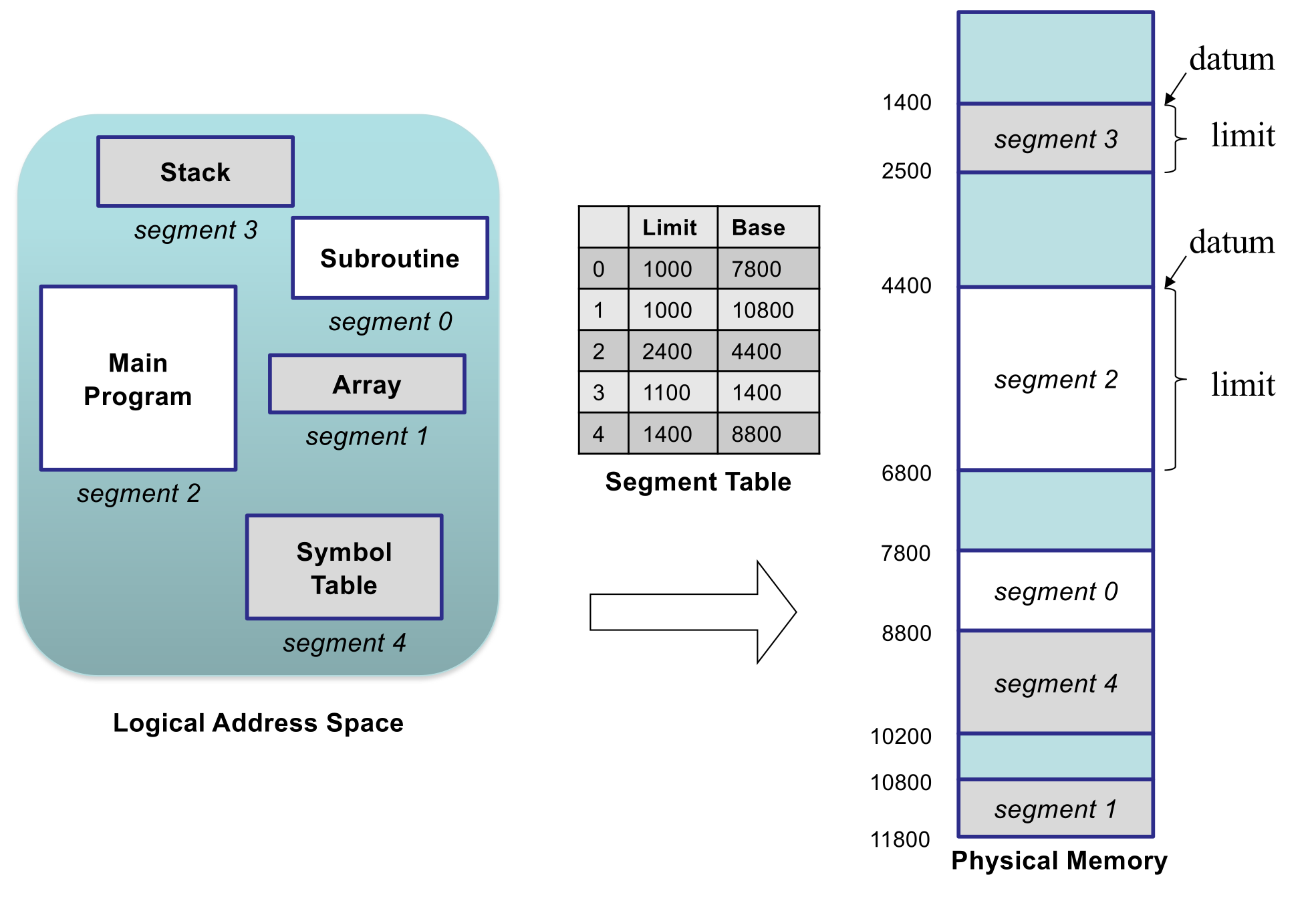Segmentation
Segmentation is splitting up chunks of a process into logical parts.
The compiler will indicate which segment represents which logical part of the code.

Each segment has its own partition. Segments need not be contiguous.
- These segments are able to be organised by the memory manager to fit where space is available.
- The segment table stores the locations and lengths of the segments.
- This aids fragmentation as the segments are smaller/dynamically loaded.
Segmented Address Structure
Each process has a segment table:
- Contains datum and limit vales of segments.
Address of the table is held in the segment table base register (STBR).
This is saved during context switches.
Segment Sharing
Suppose two users run the same program with different data:
graph TD
subgraph B
STB[Segment Table B]
end
subgraph A
STA[Segment Table A]
end
STA --> DataA[Data for process A]
STA --> Prog[Program code segment]
STB --> Prog
STB --> DataB[Data for process B]
-
Processes have their own data segments by can share the program code segment if it is pure (re-entrant).
Code is pure if it is not self modifying.
-
Economised on memory, so is more efficient.
Advantages of Segmentation
As the memory allocation reflects the program structure:
- It is easier to organise separate compilation of procedures.
- Protection is facilitated:
- Array bound checking can be done in hardware.
- Code segments can be protected from begin overwritten.
- Data segments can be protected from execution.
- Segments can be shared between processes.
- Large programs are broken into manageable units.
- Memory allocation is more flexible.
- Not all of a program needs to be in memory at the same time.
- Segments can be kept in swap space (disk) until needed.
- Allows more programs to be kept in memory.
- Swapping is more efficient.